Review of Experience in Recent Studies on the Dynamics of Land Urbanisation
Abstract
:1. Introduction
2. Demographic Changes and the Spatial Dimension of Urbanisation from a Global Perspective
3. Methodology of Proceeding and the Determination of Recent Trends in Research on Urbanisation Processes
3.1. Sources of Information Used in Analyses of Urbanisation Processes
3.2. Examples of Using Spatial Data in Analyses of Urbanisation Processes
3.2.1. The Analysis of Urbanisation Processes Using Aerial and Satellite Images
3.2.2. The Analysis of Urbanisation Processes Using Corine Land Cover Data (CLC) Data
3.2.3. The Analysis of Urbanisation Processes Using High Resolution Layers Data (HRL)
3.2.4. The Analysis of Urbanisation Processes Using Urban Atlas Data
3.2.5. Monitoring Changes in Land Use with Landsat Time Series
3.2.6. The Use of Nighttime Light (NTL) Data in Analyses of Urbanisation Processes
3.2.7. The Use of Greenhouse Gas Emission Data in Analyses of Urbanisation Processes
3.2.8. The Use of Data on Plant Vegetation Changes in Analyses of Urbanisation Processes
3.2.9. The Use of Synthetic Aperture Radar (SAR) in the Analysis of Urbanisation Processes
3.3. Possibilities of Using Spatial Data in the Research on Urbanisation Processes
4. Discussion and Conclusions
Author Contributions
Funding
Institutional Review Board Statement
Informed Consent Statement
Data Availability Statement
Conflicts of Interest
References
- United Nations. World Urbanization Prospects—Population Division; United Nations: New York, NY, USA, 2019. [Google Scholar]
- Parysek, J. Duże Miasta Europy i ich rola w Procesie Urbanizacji, Rozwoju Społeczno-Gospodarczego i Europejskiej Integracji u Schyłku XX Wieku. Przegląd Geogr. Pol. Akad. Nauk. 1995, 67, 3–4. [Google Scholar]
- Müller, N.L. Brazil. In Essays on World Urbanization; Ronald, J.E., Ed.; George Philip and Son Limited: London, UK, 1975; pp. 212–222. [Google Scholar]
- Szymańska, D.; Biegańsk, J. The Phenomenon of Urbanizationand Processes Connected with It; Studia Miejskie; University of Opole Publishing House: Opole, Poland, 2011; Volume 4, pp. 13–38. (In Polish) [Google Scholar]
- Szymańska, D. Zjawisko Urbanizacji i jej Konsekwencje. In Badania Środowiska; Turło, J.E., Ed.; Wyd. Naukowe UMK: Toruń, Poland, 1995; pp. 71–79. [Google Scholar]
- Szymańska, D. Urbanizacja na Świecie; Wyd. Naukowe PWN: Warszawa, Poland, 2007; p. 392. [Google Scholar]
- Węcławowicz, G. Geografia Społeczna Miast. Zróżnicowania Społeczno-Przestrzenne; Wyd. Naukowe PWN SA: Warszawa, Poland, 2003; p. 163. [Google Scholar]
- Ziółkowski, J. Miejsce i rola procesu urbanizacji w prZeobrażeniach społecznych w polsce ludowej. In Procesy Urbanizacyjne w Powojennej Polsce; Nowakowski, S., Ed.; PWN: Warsaw, Poland, 1967. [Google Scholar]
- Nowak, S. Obiektywne i Psychologiczne Parametry Przemian Struktury Społecznej; Materiały III Ogólnopolskiego Zjazdu Socjologicznego, z: Warsaw, Poland, 1967; p. 2. [Google Scholar]
- Gałęski, B. Innowacje a Społeczność Wiejska; Wyd. Książka i Wiedza: Warszawa, Poland, 1971. [Google Scholar]
- Smiraglia, D.; Salvati, L.; Egidi, G.; Salvia, R.; Giménez-Morera, A.; Halbac-Cotoara-Zamfir, R. Toward a New Urban Cycle? A Closer Look to Sprawl, Demographic Transitions and the Environment in Europe. Land 2021, 10, 127. [Google Scholar] [CrossRef]
- Divigalpitiya, P.; Nurul Handayani, K. Measuring the Urban Expansion Process of Yogyakarta City in Indonesia Urban expansion process and spatial and temporal characteristics of growing cities. Int. Rev. Spat. Plan. Sustain. Dev. 2015, 3, 18–32. [Google Scholar] [CrossRef] [Green Version]
- Meng, L.; Sun, Y.; Zhao, S. Comparing the spatial and temporal dynamics of urban expansion in Guangzhou and Shenzhen from 1975 to 2015: A case study of pioneer cities in China’s rapid urbanization. Land Use Policy 2020, 97, 104753. [Google Scholar] [CrossRef]
- Antrop, M. Landscape change and the urbanization process in Europe. Landsc. Urban Plan. 2004, 67, 9–26. [Google Scholar] [CrossRef]
- Ramachandra, T.V.; Bharath, H. Aithal Durgappa, D. Sanna. Insights to urban dynamics through landscape spatial pattern analysis. Int. J. Appl. Earth Obs. Geoinf. 2012, 18, 329–343. [Google Scholar] [CrossRef]
- Smailes, A.E. The Definition and Measurement of Urbanization, [w:] Essays on World Urbanization; Jones, R., Ed.; George Philip and Son Ltd.: London, UK, 1975; pp. 1–19. [Google Scholar]
- Szymańska, D. Geografia Osadnictwa; Wyd. Naukowe PWN: Warszawa, Poland, 2009. [Google Scholar]
- You, H. Quantifying the coordinated degree of urbanizationin Shanghai, China. Qual. Quant. 2016, 50, 1273–1283. [Google Scholar] [CrossRef]
- Sato, Y.; Yamamoto, K. Population concentration, urbanization, and demographic transition. J. Urban Econ. 2005, 58, 45–61. [Google Scholar] [CrossRef]
- Biłozor, A.; Cieślak, I.; Czyza, S. An analysis of urbanisation dynamics with the use of the fuzzy set theory—A case study of the city of Olsztyn. Remote Sens. 2020, 12, 1784. [Google Scholar] [CrossRef]
- Wojtkun, G. Do Cities Really Expand? Czas. Tech. Archit. 2010, 107, 311–317. [Google Scholar]
- Mulder, C.H. Population and housing: A two-sided relationship. Demogr. Res. 2006, 15, 401–412. [Google Scholar] [CrossRef] [Green Version]
- Cieślak, I.; Szuniewicz, K.; Pawlewicz, K.; Czyza, S. Land Use Changes Monitoring with CORINE Land Cover Data. IOP Conf. Ser. Mater. Sci. Eng. 2017, 245, 052049. [Google Scholar] [CrossRef] [Green Version]
- UN-Habitat, Urbanization and Development: Emerging Futures. 2016. Available online: https://unhabitat.org/world-cities-report (accessed on 15 July 2021).
- Montgomery, M.R.; Stren, R.; Cohen, B.; Reed, H.E. National Research Council. Cities Transformed: Demographic Change and Its Implications in the Developing World; The National Academies Press: Washington, DC, USA, 2003. [Google Scholar] [CrossRef]
- Pictet. The Role of Cities in the Global Economy. Available online: https://www.group.pictet/wealth-management/role-cities-global-economy (accessed on 2 September 2021).
- Weinstein, E. Migration for the benefit of all: Towards a new paradigm for economic immigration. Int. Labour Rev. 2002, 141, 225. [Google Scholar] [CrossRef]
- Kruszyna, M.; Śleszyński, P.; Rychlewski, J. Dependencies between Demographic Urbanization and the Agglomeration Road Traffic Volumes: Evidence from Poland. Land 2021, 10, 47. [Google Scholar] [CrossRef]
- Schneider, C.; Achilles, B.; Merbitz, H. Urbanity and Urbanization: An Interdisciplinary Review Combining Cultural and Physical Approaches. Land 2014, 3, 105–130. [Google Scholar] [CrossRef] [Green Version]
- Hou, B.; Nazroo, J.; Banks, J.; Marshall, A. Are cities good for health? A study of the impacts of planned urbanization in China. Int. J. Epidemiol. 2019, 48, 1083–1090. [Google Scholar] [CrossRef]
- Güneralp, B.S.; Lwasa, H.; Masundire, S.; Parnell, S.; Seto, K.C. Urbanization in Africa: Challenges and opportunities for conservation. Environ. Res. Lett. 2018, 13, 015002. [Google Scholar] [CrossRef]
- United Nations. The World’s Cities 2018-Data Booklet; Book Series: Statistical Papers-United Nations (Ser. A), Population and Vital Statistics Report; United Nations: New York, NY, USA, 2018. [Google Scholar] [CrossRef]
- The World Bank. Urban Development. Available online: https://www.worldbank.org/en/topic/urbandevelopment/overview (accessed on 2 September 2021).
- Dobbs, R.; Smit, S.; Remes, J.; Manyika, J.; Roxburgh, C.; Restrepo, A. Urban World: Mapping the Economic Power of Cities. McKinsey Global Institute. March 2011. McKinsey & Company 2011. Available online: https://www.mckinsey.com/~/media/McKinsey/Featured%20Insights/Urbanization/Urban%20world/MGI_urban_world_mapping_economic_power_of_cities_full_report.ashx (accessed on 15 July 2021).
- Cieślak, I. Identification of areas exposed to land use conflict with the use of multiple-criteria decision-making methods. Land Use Policy 2019, 89, 104225. [Google Scholar] [CrossRef]
- Cieślak, I.; Biłozor, A.; Źróbek-Sokolnik, A.; Zagroba, M. The use of geographic databases for analyzing changes in land cover—A case study of the Region of Warmia and Mazury in Poland. ISPRS Int. J. Geo-Inf. 2020, 9, 358. [Google Scholar] [CrossRef]
- Wojtkun, G. Współczesne osadnictwo osiedlowe-aspekt metodyczny. Sr. Mieszk. 2009, 3, 159–161. [Google Scholar]
- Mikolai, J.; Kulu, H.; Mulder, C.H. Family life transitions, residential relocations, and housing in the life course: Current research and opportunities for future work: Introduction to the Special Collection on “Separation, Divorce, and Residential Mobility in a Comparative Perspective. Demogr. Res. 2020, 43, 35–58. [Google Scholar] [CrossRef]
- Caprotti, F.; Cowley, R.; Datta, A.; Broto, V.C.; Gao, E.; Georgeson, L.; Herrick, C.; Odendaal, N.; Joss, S. The New Urban Agenda: Key opportunities and challenges for policy and practice. Urban Res. Pract. 2017, 10, 367–378. [Google Scholar] [CrossRef] [Green Version]
- Gao, J.; O’Neill, B.C. Mapping global urban land for the 21st century with data-driven simulations and Shared Socioeconomic Pathways. Nat. Commun. 2020, 11, 2302. [Google Scholar] [CrossRef] [PubMed]
- Czerny, M. Globalizacja i Rozwój. Wybrane Zagadnienia Geografii Gospodarczej Świata; Wydawnictwo Naukowe PWN: Warsaw, Poland, 2005. [Google Scholar]
- Parysek, M.; Parysek, J.J.; Mierzejewska, L.; Jażdżewska, I. Między Dezurabnizacją a Reurbanizacją: Nowe Oblicze Urbanizacji w Pol-sce, [w:] Współczesne Procesy Urbanizacji i Ich Skutki; Wyd. UŁ: Łódź, Poland, 2005. [Google Scholar]
- Degórska, B. Spatial Urbanization of Rural Areas in the Warsaw Metropolitan Area. Ecological and Landscape Context; Instytut Geografii I Przestrzennego Zagospodarowania im. Stanisława Leszczyckiego, Polska Akademia Nauk: Warsaw, Poland, 2017. (In Polish) [Google Scholar]
- Mils, E. Studiesin fhe Structureofthe Urban Economy; Johns Hopkins Press: Baltimore, MD, USA, 1972. [Google Scholar]
- O’sullivan, A. Urban Economics; McGraw-Hill/Irwin: New York, NY, USA, 2007; pp. 225–226. [Google Scholar]
- Geshkov, M. Urban sprawl in Eastern Europe: The Sofia City example. Econ. Altern. 2015, 2, 101–116. [Google Scholar]
- Biłozor, A. Urban land use changes forecasting. In Proceedings of the 9th International Conference on Environmental Engineering. Section: Sustainable Urban Development, Vilnius, Lithuania, 22–23 May 2014; ISBN 978-609-457-640-9. [Google Scholar]
- Biłozor, A.; Czyża, S.; Bajerowski, T. Identification and Location of a Transitional Zone between an Urban and a Rural Area Using Fuzzy Set Theory, CLC, and HRL Data. Sustainability 2019, 11, 7014. [Google Scholar] [CrossRef] [Green Version]
- Simon, D. Urban Environments: Issues on the Peri-Urban Fringe. Annu. Rev. Environ. Resour. 2008, 33, 167–185. [Google Scholar] [CrossRef]
- Siemiński, J. Rural-urban continuum and some of its infrastructural problems. Infrastruct. Ecol. Rural. Areas 2010, 2, 215–228. [Google Scholar]
- Sobotka, S. Transformation of the historical spatial arrangements of the villages in the suburban area of Olsztyn, with particular emphasis on Brąswałd, Dorotowo and Jonkowo. Acta Sci. Pol. Adm. Locorum 2014, 13, 39–68. (In Polish) [Google Scholar]
- Szmytkie, R. Methods of Analysis of the Morphology and Physiomic of Sedate Units; Scientific Hearings of the Institute of Geography and Regional Development of the University of Wrocław no. 35; Institute of Geography and Regional Development of the University of Wrocław: Wrocław, Poland, 2014; Available online: http://www.geogr.uni.wroc.pl/data/files/publikacje-rozprawy-naukowe-igrr/rozprawy_35.pdf (accessed on 15 July 2021). (In Polish)
- Konecka-Szydłowska, B. The smallest cities in Poland in terms of the concept of urban-rural continuums. Reg. Dev. Reg. Policy 2018, 41, 151–165. (In Polish) [Google Scholar]
- Degórska, B. Spatial urbanization of rural areas in the metropolitan area of Warsaw. Ecological and landscape context. In Institute of Geography and Spatial Development im. Stanisława Leszczyckiego, Polish Academy of Sciences, Geographic Work, no 262; Institute of Geography and Spatial Development: Warsaw, Poland, 2017. (In Polish) [Google Scholar]
- Ravetz, J.; Warhurst, P. Manchester: Re-inventing the local–global in the peri-urban city-region. In Peri-Urban Futures: Scenarios and Models for Land Use Change in Europe; Nilsson, K., Pauleit, S., Bell, S., Aalbers, C., Sick Nielsen, T., Eds.; Springer: Berlin/Heidelberg, Germany, 2013. [Google Scholar] [CrossRef]
- Loibl, W.; Piorr, A.; Ravetz, J. Concepts and methods. In Peri-Urbanisation in Europe: Towards a European Policy to Sustain Urban-Rural Futures; Piorr, A., Ravetz, J., Tosics, I., Eds.; University of Copenhagen, Academic Books Life Sciences: Copenhagen, Denmark, 2011; pp. 24–29. [Google Scholar]
- Labbé, D. Facing the Urban Transition in Hanoi: Recent Urban Planning Issues and Initiatives; Institut National de la Reherche scientifique Centre-Urbanisation Culture Société: Québec City, QC, Canada, 2010; Available online: http://espace.inrs.ca/id/eprint/4986/1/HanoiUrbanization.pdf (accessed on 15 July 2021).
- Acevedo, W.; Masuoka, P. Time-series animation techniques for visualizing urban growth. Comput. Geosci. 1997, 23, 423–435. [Google Scholar] [CrossRef]
- Csatári, B.; Farkas, J.Z.; Lennert, J. Land Use Changes in the Rural-Urban Fringe of Kecskemét after the Economic Transition. J. Settl. Spat. Plan. 2013, 4, 153–159. [Google Scholar]
- Nabielek, K.; Kronberger-Nabielek, P.; Hamers, D. The rural-urban fringe in the Netherlands: Recent developments and future challenges. SPOOL 2013, 1, 1–18. [Google Scholar] [CrossRef]
- Simon, D.; McGregor, D.; Nsiah-Gyabaah, K. The changing urban–rural interface of African cities: Definitional issues and an application to Kumasi, Ghana. Environ. Urban. 2004, 16, 235–248. [Google Scholar]
- Tacoli, C. The links between rural and urban development. Environ. Urban. 2003, 15, 3–12. [Google Scholar] [CrossRef] [Green Version]
- Hoffmann, E.; Jose, M.; Nölke, N.; Möckel, T. Construction and Use of a Simple Index of Urbanisation in the Rural–Urban Interface of Bangalore, India. Sustainability 2017, 9, 2146. [Google Scholar] [CrossRef] [Green Version]
- Gallent, N. The Rural–Urban fringe: A new priority for planning policy? Plan. Pract. Res. 2006, 21, 383–393. [Google Scholar] [CrossRef]
- Hao, P.; Geertman, S.; Hooimeijer, P.; Sliuzas, R. The land-use diversity in urban villages in Shenzhen. Environ. Plan. 2012, 44, 2742–2764. [Google Scholar] [CrossRef]
- Gallent, N.; Shaw, D. Spatial planning, area action plans and the rural-urban fringe. J. Environ. Plan. Manag. 2001, 50, 617–638. [Google Scholar] [CrossRef]
- Gant, R.; Robinson, G.; Shahab, F. Land-use change in the ‘edgelands’: Policies and pressures in London’s rural–urban fringe. Land Use Policy 2011, 28, 266–279. [Google Scholar] [CrossRef]
- Datta, R. Territorial Integration: An approach to address urbanising villages in the planning for Delhi metropolitan area, India. In Proceedings of the Territorial Integration of Urbanising Villages 40th ISoCaRP Congress, Geneva, Switzerland, 22 September 2004. [Google Scholar]
- Biłozor, A.; Renigier-Biłozor, M.; Cellmer, R. Assessment Procedure of Suburban Land Attractiveness and Usability for Housing. In Proceedings of the Baltic Geodetic Congress, Olsztyn, Poland, 21–23 June 2018. [Google Scholar] [CrossRef]
- Renigier-Bilozor, M.; Bilozor, A. Optimization of the Variables Selection in the Process of Real Estate Markets Rating. Oeconomia Copernic. 2015, 6, 139–157. [Google Scholar] [CrossRef]
- Renigier-Biłozor, M.; Biłozor, A.; Wiśniewski, R. 2017. Real estate markets rating engineering as the condition of urban areas assessment. Land Use Policy 2017, 61, 511–525. [Google Scholar] [CrossRef]
- Ready, R.; Abdalla, C. GIS Analysis of Land Use on the Rural-Urban Fringe: The Impact of Land Use and Potential Local Disamenities on Residential Property Values and on the Location of Residential Development in Berks County, Pennsylvania; Final Report; Staff Paper 364; Pennsylvania State University: State College, PA, USA, 2003. [Google Scholar]
- Renigier-Bilozor, M.; Wisniewski, R.; Bilozor, A. Rating attributes toolkit for the residential property market. Int. J. Strateg. Property Manag. 2017, 21, 307–317. [Google Scholar] [CrossRef]
- Renigier-Bilozor, M. Modern classification system of real estate markets. Geodetski Vestnik 2017, 61, 441–460. [Google Scholar] [CrossRef]
- Renigier-Biłozor, M.; Walacik, M.; Źróbek, S.; d’Amato, M. Forced sale discount on property market—How to assess it? Land Use Policy 2018, 78, 104–115. [Google Scholar] [CrossRef]
- Konieczna, J.; Trystuła, A. Źródłą danych geoprzestrzennych na potrzeby waloryzacji. In Współczesna Waloryzacja Przestrzeni Zurbanizowanej; Iwona, C., Ed.; Wydawnictwo UWM w Olsztynie: Olsztyn, Poland, 2012. [Google Scholar]
- Lefebvre, A.; Sannier, C.; Corpetti, T. Monitoring Urban Areas with Sentinel-2A Data: Application to the Update of the Copernicus High Resolution Layer Imperviousness Degree. Remote Sens. 2016, 8, 606. [Google Scholar] [CrossRef] [Green Version]
- Zhang, M.; Chen, F.; Tian, B.; Liang, D. Multi-temporal SAR image classification of coastal plain wetlands using a new feature selection method and random forests. Remote Sens. Lett. 2019, 10, 312–321. [Google Scholar] [CrossRef]
- Renigier-Biłozor, M.; Biłozor, A. The use of geoinformation in the process of optimization the use of land. In Proceedings of the 9th International Conference on “Environmental Engineering”, Vilnius, Lithuania, 22–23 May 2014. Section: Sustainable Urban Development Vilnius, Lithuania, eISSN 2029-7092/eISBN 978-609-457-640-9. [Google Scholar]
- Lisini, G.; Salentinig, A.; Du, P.; Gamba, P. SAR-Based Urban Extents Extraction: From ENVISAT to Sentinel-1. IEEE J. Sel. Top. Appl. Earth Obs. Remote Sens. 2018, 11, 2683–2691. [Google Scholar] [CrossRef]
- Bielecka, E.; Ciołkosz, A. CLC-2006-Database of Land Cover in Poland; PPK t. 41; 2009; Volume 3, pp. 227–236. [Google Scholar]
- Kantak, T. Spatial Information Systems (Auditory). Self-Study Support Materials for 3rd Year Part-Time Students of Navigation Major 2013/2014. Available online: https://gisplay.pl/gis/definicje-gis.html (accessed on 16 July 2021).
- Heymann, Y.; Steenmans, C.; Croisille, G.; Bossard, M. Corine Land Cover; Technical Guide 1994; Office for Official Publications of European Communities: Luxembourg, 1994. [Google Scholar]
- Cieślak, I.; Biłozor, A.; Szuniewicz, K. The Use of the CORINE Land Cover (CLC) Database for Analyzing Urban Sprawl. Remote Sens. 2020, 12, 282. [Google Scholar] [CrossRef] [Green Version]
- Kuc, G.; Chormański, J. Sentinel-2 imagery for mapping and monitoring imperviousness in urban areas. Int. Arch. Photogramm. Remote Sens. Spat. Inf. Sci. 2019, 42, 43–47. [Google Scholar] [CrossRef] [Green Version]
- Furberg, D.; Ban, Y.; Nascetti, A. Monitoring of Urbanization and Analysis of Environmental Impact in Stockholm with Sentinel-2A and SPOT-5 Multispectral Data. Remote Sens. 2019, 11, 2408. [Google Scholar] [CrossRef] [Green Version]
- Liu, X.; Hu, G.; Chen, Y.; Li, X.; Xu, X.; Shaoying, L.; Pei, F.; Wang, S. 2018. High-resolution multi-temporal mapping of global urban land using Landsat images based on the Google Earth Engine Platform. Remote Sens. Environ. 2018, 209, 227–239. [Google Scholar] [CrossRef]
- Pazúr, R.; Feranec, J.; Štych, P.; Kopecká, M.; Holman, L. 2017. Changes of urbanised landscape identified and assessed by the UrbanAtlas data: Case study of Prague and Bratislava. Land Use Policy 2017, 61, 135–146. [Google Scholar] [CrossRef]
- Schug, F.; Okujeni, A.; Hauer, J.; Hostert, P.; Nielsen, J.; van der Linden, S. Mapping patterns of urban development in Ouagadougou, Burkina Faso, using machine learning regression modeling with bi-seasonal Landsat time series. Remote Sens. Environ. 2018, 210, 217–228. [Google Scholar] [CrossRef]
- Hsu, F.; Zhizhin, M.; Ghosh, T.; Elvidge, C.; Taneja, J. The Annual Cycling of Nighttime Lights in India. Remote Sens. 2021, 13, 1199. [Google Scholar] [CrossRef]
- Liua, Z.; Hea, C.; Zhangc, O.; Huangd, O.; Yang Yanga, Y. 2012. Extracting the dynamics of urban expansion in China using DMSP-OLS nighttime light data from 1992 to 2008. Landsc. Urban Plan. 2012, 106, 62–72. [Google Scholar] [CrossRef]
- Jones, C.; Kammen, D.M. 2014. Spatial Distribution of U.S. Household Carbon Footprints Reveals Suburbanization Undermines Greenhouse Gas Benefits of Urban Population Density. Environ. Sci. Technol. 2014, 48, 895–902. [Google Scholar] [CrossRef]
- Hahs, A.K.; Mcdonnell, M.J.; Mccarthy, M.A.; Vesk, P.A.; Corlett, R.T.; Norton, B.A.; Clemants, S.E.; Duncan, R.P.; Thompson, K.; Schwartz, M.W. A global synthesis of plant extinction rates in urban areas. Ecol. Lett. 2010, 12, 1165–1173. [Google Scholar] [CrossRef]
- Ives, C.D.; Lentini, P.E.; Threlfall, C.G.; Ikin, K.; Shanahan, D.F.; Garrard, G.E.; Bekessy, S.A.; Fuller, R.A.; Mumaw, L.; Rayner, L.; et al. Cities are hotspots for threatened species. Glob. Ecol. Biogeogr. 2016, 25, 117–126. [Google Scholar] [CrossRef]
- Luo, M.; Lau, N.C. Urban Expansion and Drying Climate in an Urban Agglomeration of East China. Geophys. Res. Lett. 2019, 46, 6868–6877. [Google Scholar] [CrossRef]
- Fan, H.; Yu, Z.; Yang, G.; Liu, T.Y.; Liu, T.Y.; Hung, C.H.; Vejre, H. How to cool hot-humid (Asian) cities with urban trees? An optimal landscape size perspective. Agr. For. Meteorol. 2019, 265, 338–348. [Google Scholar] [CrossRef]
- Jenerette, G.D.; Harlan, S.L.; Brazel, A.; Jones, N.; Larsen, L.; Stefanov, W.L. Regional relationships between surface temperature, vegetation, and human settlement in a rapidly urbanizing ecosystem. Landsc. Ecol. 2007, 22, 353–365. [Google Scholar] [CrossRef]
- Tu, M.; Liu, Z.; He, C.; Fang, Z.; Lu, W. The relationships between urban landscape patterns and fine particulate pollution in China: A multiscale investigation using a geographically weighted regression model. J. Clean Prod. 2019, 237, 117744. [Google Scholar] [CrossRef]
- Cao, Y.; Wang, Y.; Li, G.; Fang, X. 2019. Vegetation Response to Urban Landscape Spatial Pattern Change in the Yangtze River Delta, China. Sustainability 2020, 12, 68. [Google Scholar] [CrossRef] [Green Version]
- Thiel, M.; Esch, T.; Schenk, A. Object-oriented detection of urban areas from terrasar-x data. 2008. The International Archives of the Photogrammetry. Remote Sens. Spat. Inf. Sci. 2008, XXXVII Pt B8, 23–26. [Google Scholar]
- Batty, M. New ways of looking at cities. Nature 1995, 377, 574. [Google Scholar] [CrossRef]
- Antrop, M. Changing patterns in the urbanized countryside of Western Europe. Landsc. Ecol. 2000, 15, 257–270. [Google Scholar] [CrossRef]
- Zhu, Y. Changing urbanization processes and in situ rural-urban transformation: Reflections on China’s settlement definitions. In New forms of Urbanization; Routledge: London, UK, 2017; pp. 207–228. [Google Scholar]
- Das, M.; Das, A. Dynamics of Urbanization and its impact on Urban Ecosystem Services (UESs): A study of a medium size town of West Bengal, Eastern India. J. Urban Manag. 2019, 8, 420–434. [Google Scholar] [CrossRef]
- Wang, J.; Lin, Y.; Glendinning, A.; Xu, Y. Land-use changes and land policies evolution in China’s urbanization processes. Land Use Policy 2018, 75, 375–387. [Google Scholar] [CrossRef]
- Petrişor, A.I.; Ianoş, I.; Tălângă, C. Land cover and use changes focused on the urbanization pro-cesses in Romania. Environ. Eng. Manag. J. 2010, 9, 765–771. [Google Scholar] [CrossRef]
- Morano, P.; Guarini, M.R.; Tajani, F.; Anelli, D. Sustainable redevelopment: The cost-revenue analysis to support the urban planning decisions. In International Conference on Computational Science and Its Applications; Springer: Cham, Switzerland, 2020; pp. 968–980. [Google Scholar]
- BenDor, T.K.; Metcalf, S.S.; Paich, M. The dynamics of brownfield redevelopment. Sustainability 2011, 3, 914–936. [Google Scholar] [CrossRef] [Green Version]
- BenDor, T.; Metcalf, S. Conceptual Modeling and Dynamic Simulation of Brownfield Redevelopment. In Proceedings of the 23rd International System Dynamics Conference, Boston, MA, USA, 17–21 July 2005. [Google Scholar]
- Attardi, R.; Cerreta, M.; Sannicandro, V.; Torre, C.M. Non-compensatory composite indicators for the evaluation of urban planning policy: The land-use policy efficiency index (LUPEI). Eur. J. Oper. Res. 2018, 264, 491–507. [Google Scholar] [CrossRef]
- Cerreta, M.; Panaro, S.; Poli, G. A spatial decision support system for multifunctional landscape assessment: A transformative resilience perspective for vulnerable inland areas. Sustainability 2021, 13, 2748. [Google Scholar] [CrossRef]
- Burkhard, B.; Kroll, F.; Müller, F.; Windhorst, W. Landscapes’ capacities to provide ecosystem services—A concept for land-cover based assessments. Landsc. Online 2009, 15, 1–22. [Google Scholar] [CrossRef]
- Sutton, P.C.; Costanza, R. Global estimates of market and non-market values derived from nighttime satellite imagery, land cover, and ecosystem service valuation. Ecol. Econ. 2002, 41, 509–527. [Google Scholar] [CrossRef]
- Mierzejewska, L. Sustainable urban development—Selected understandings, concepts and models. Problems of Urban Development. Probl. Rozw. Miast. 2015, 3, 5–11. (In Polish) [Google Scholar]
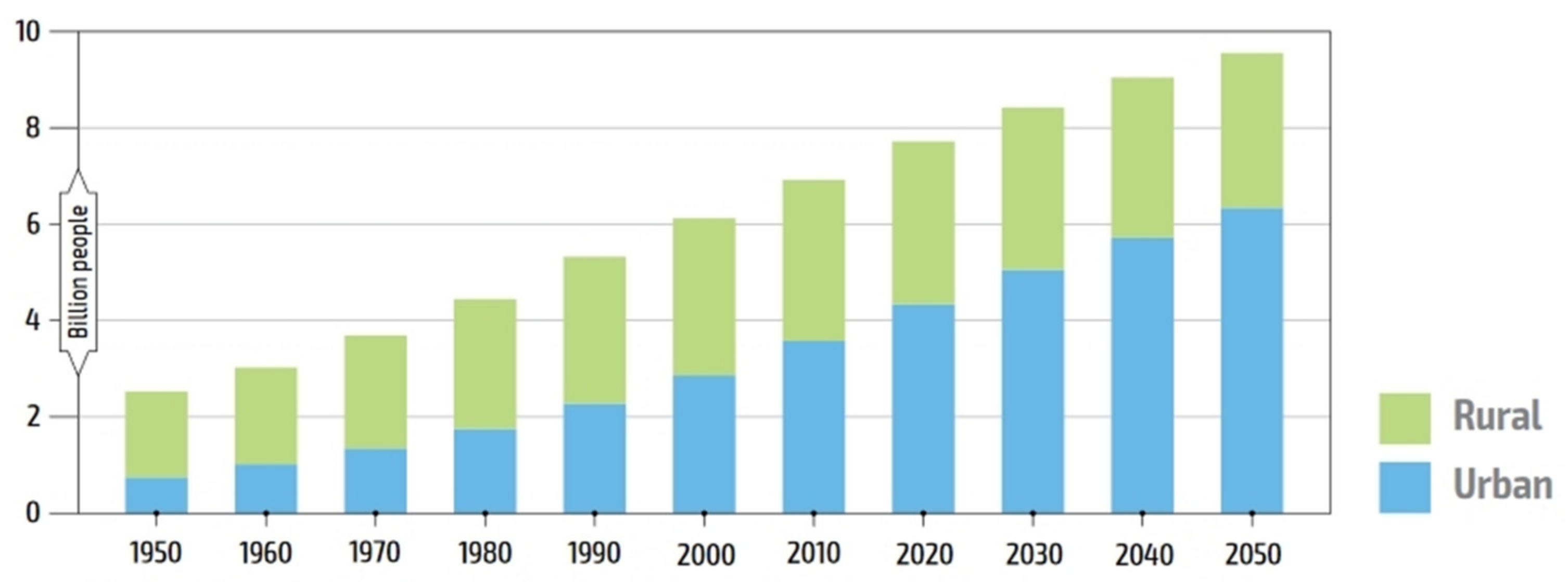
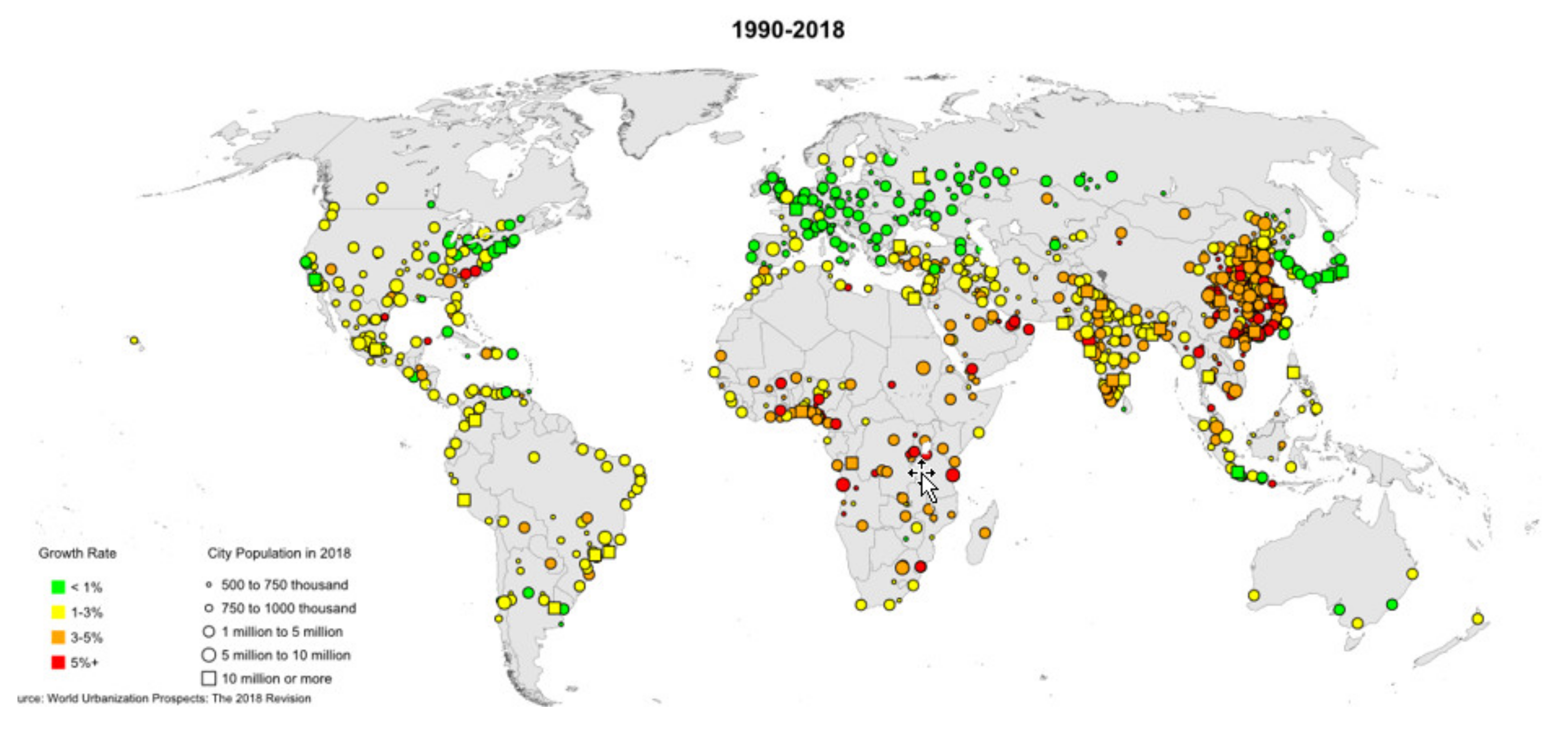
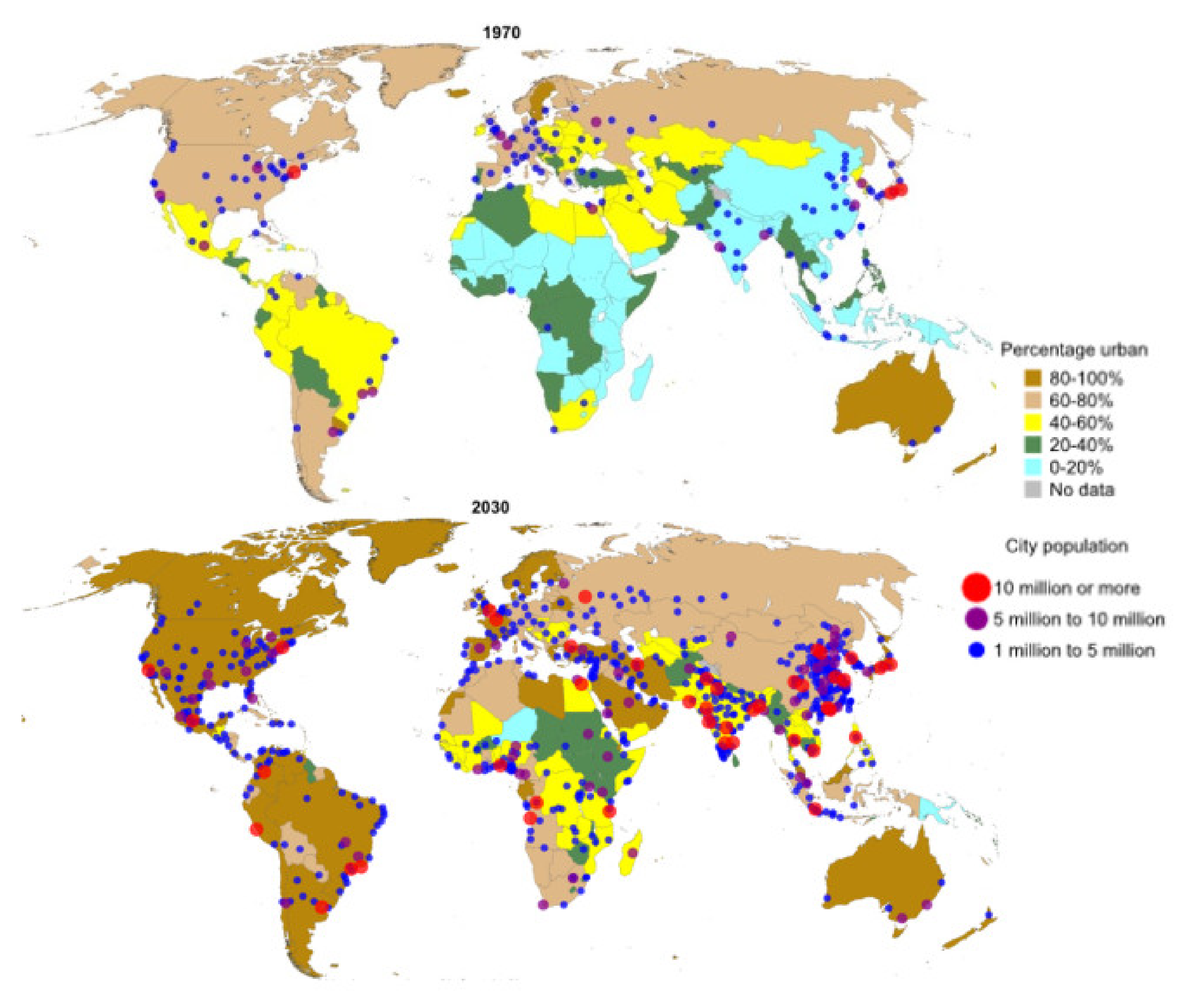
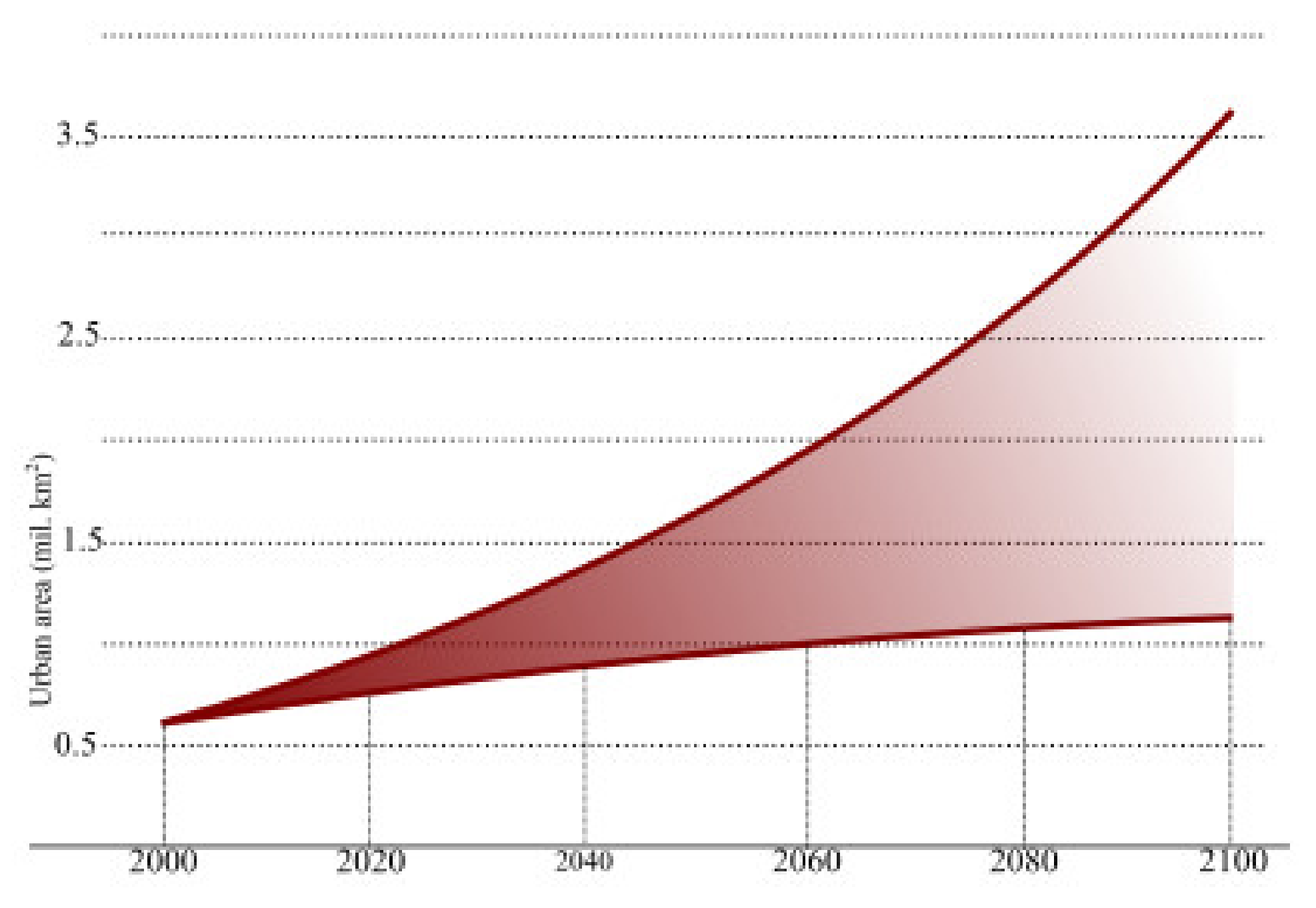
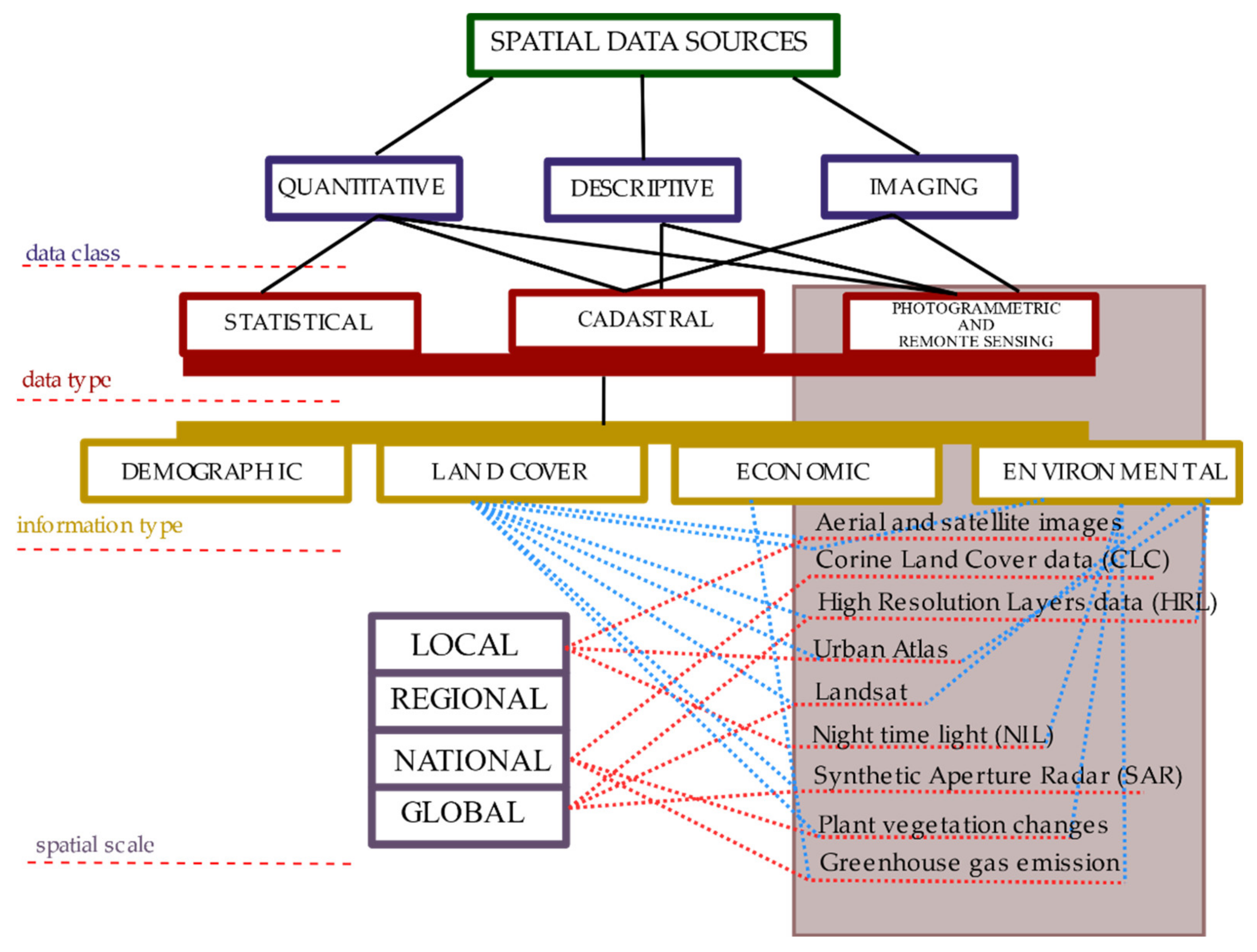
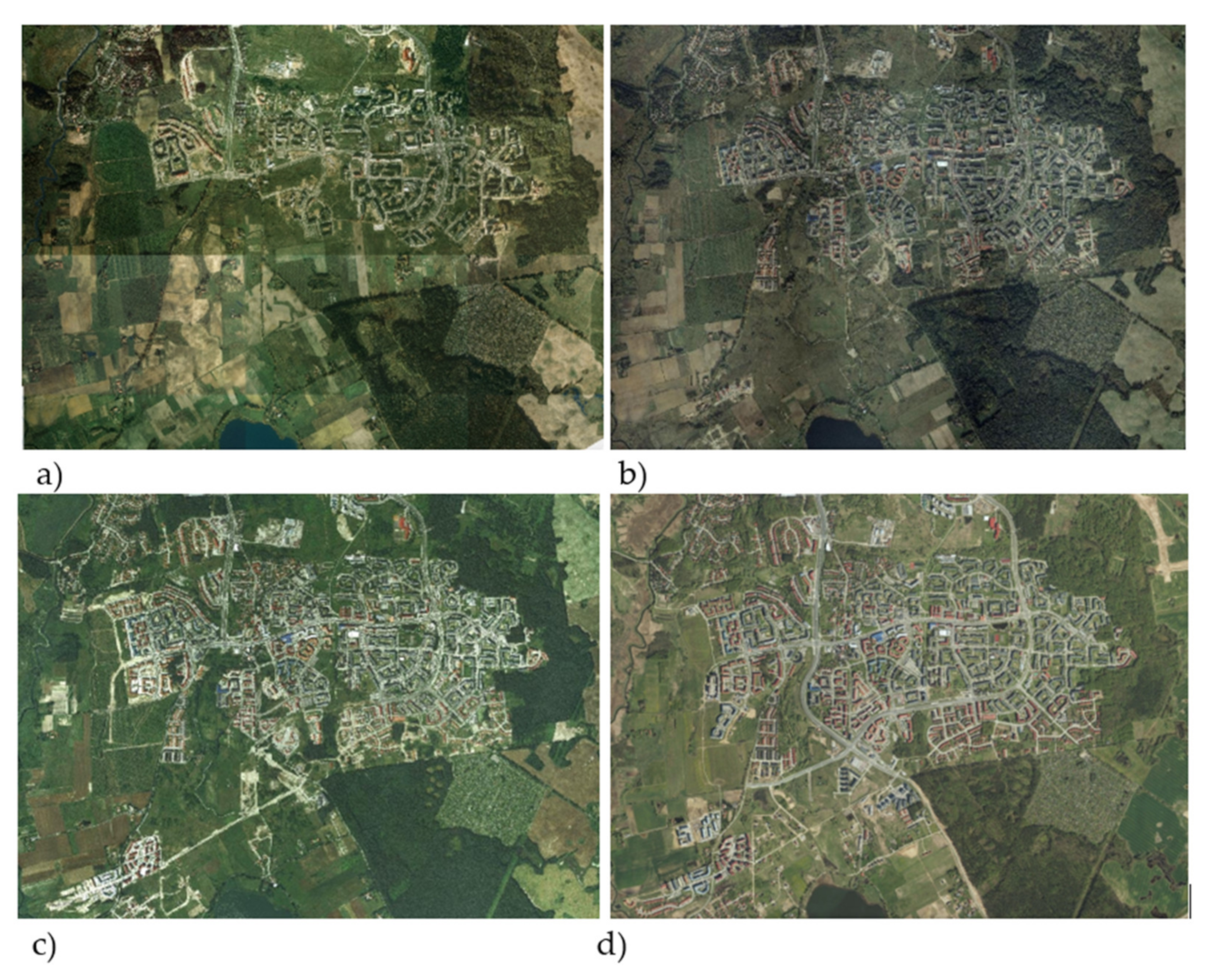
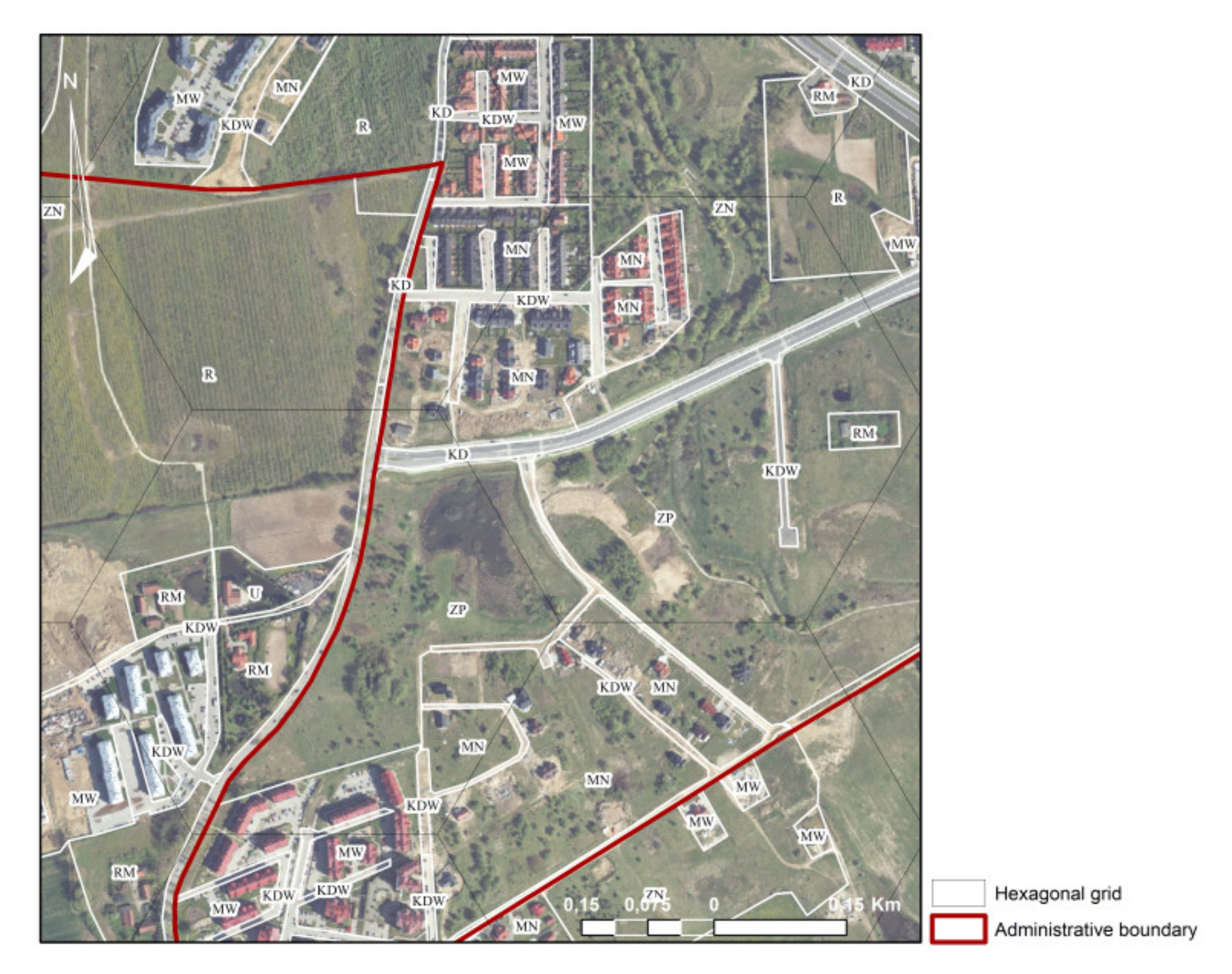
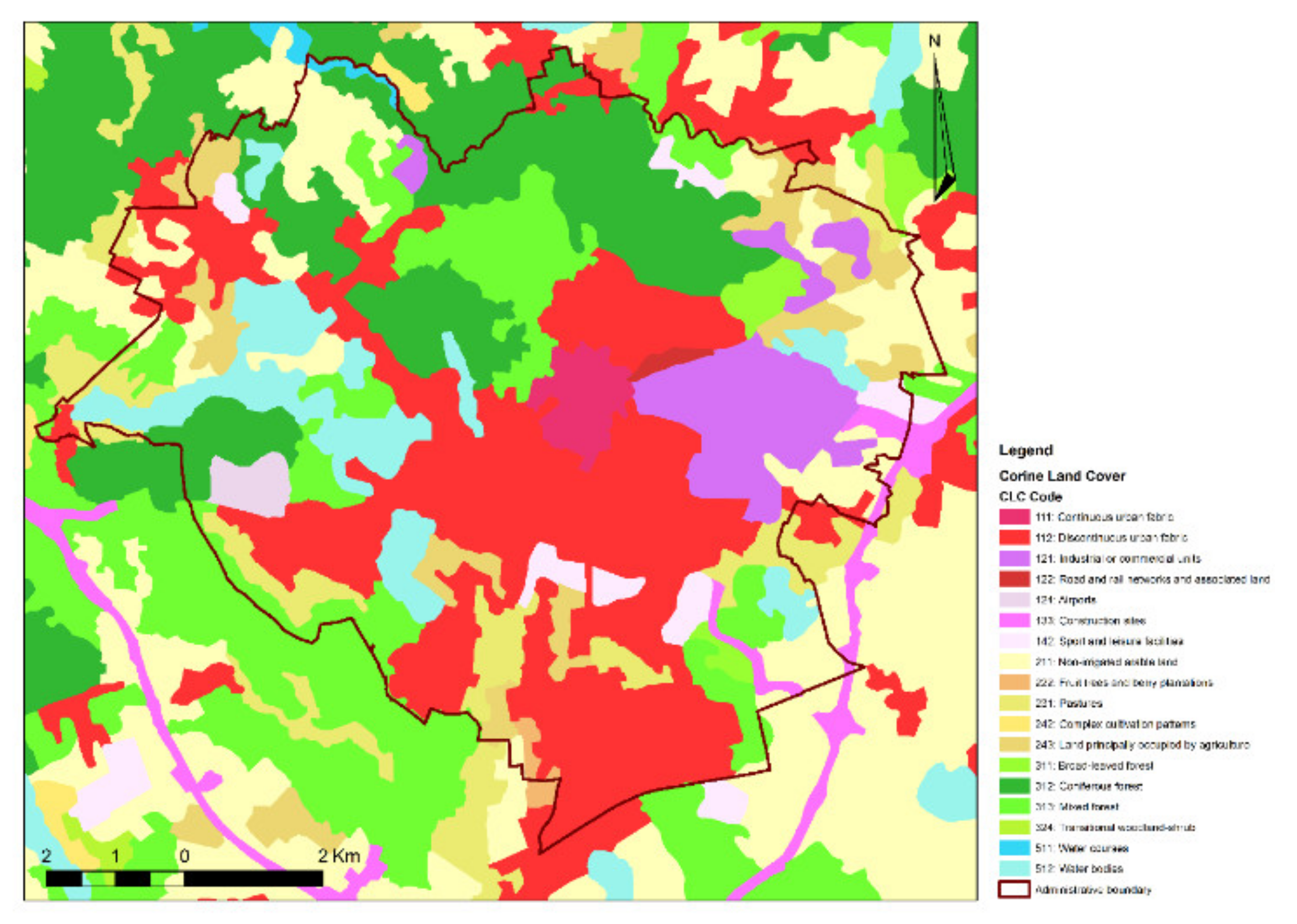
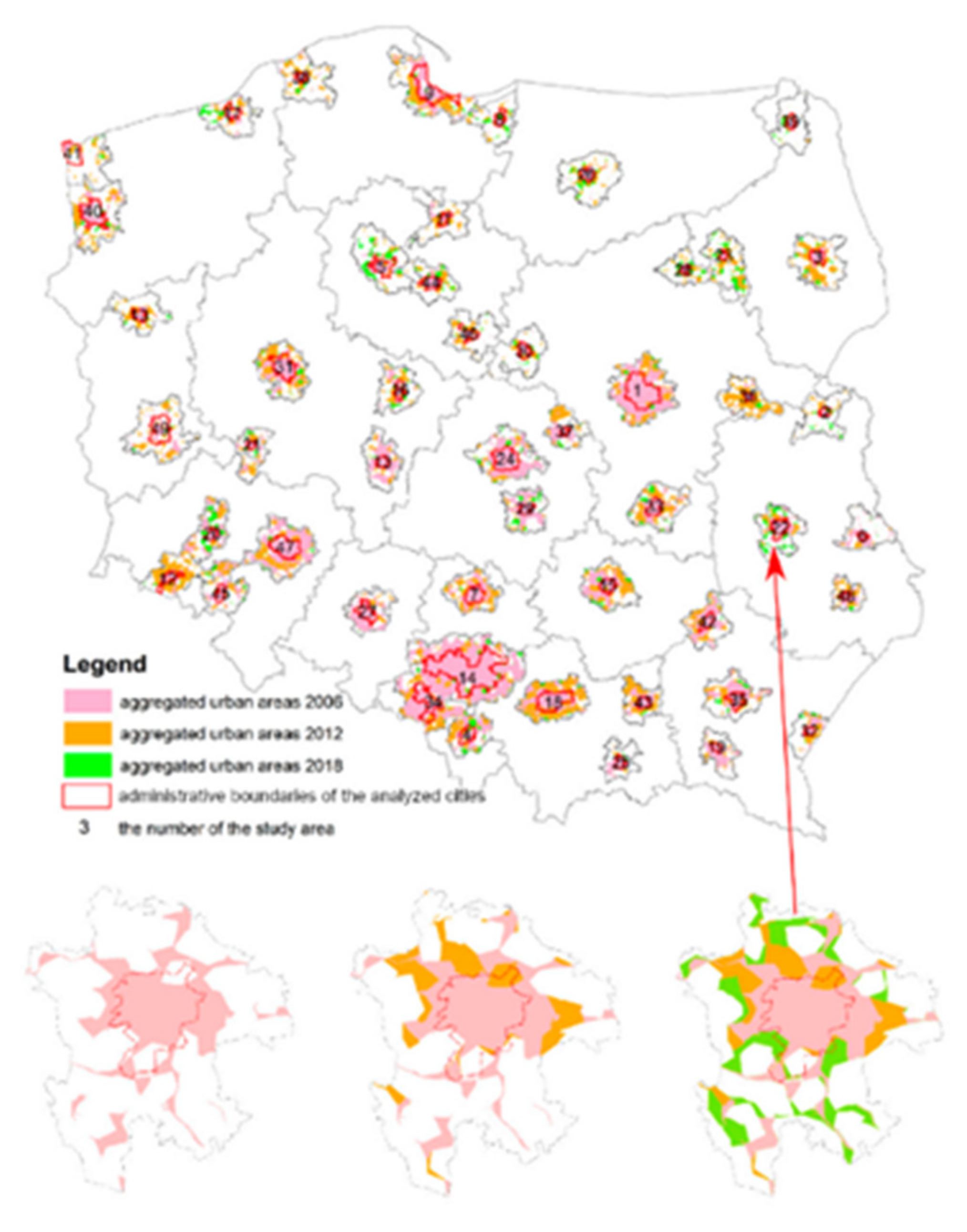
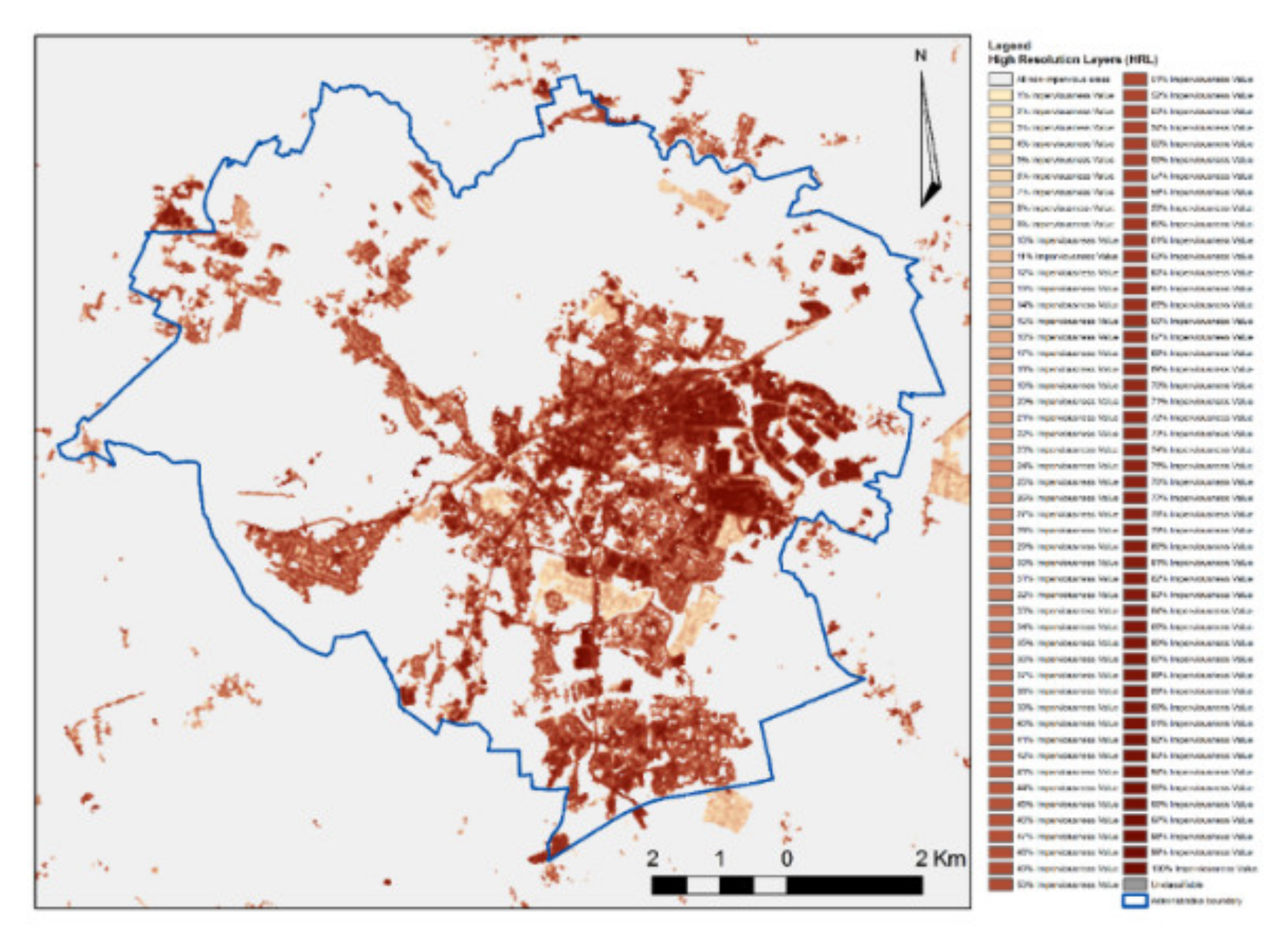
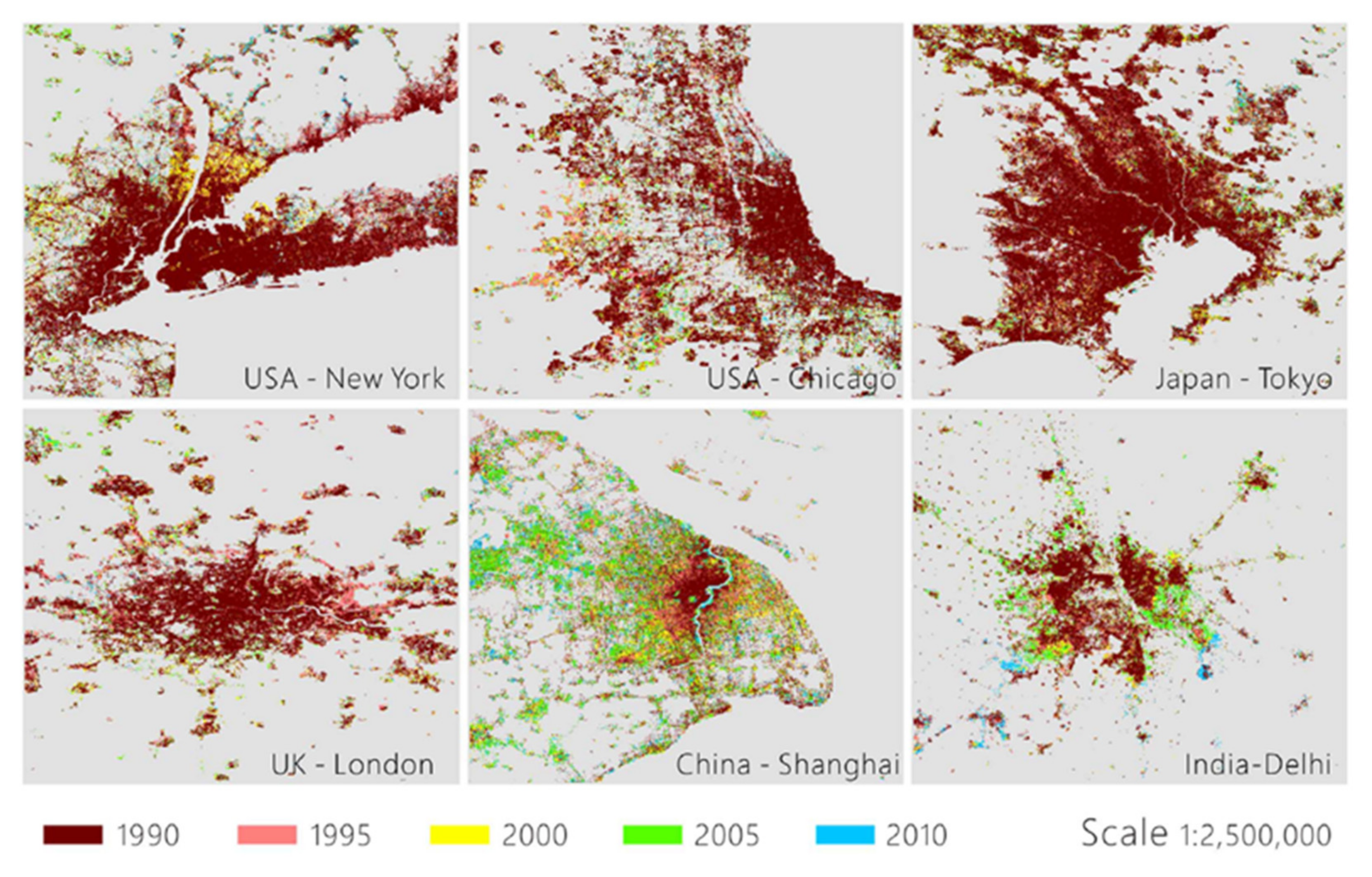

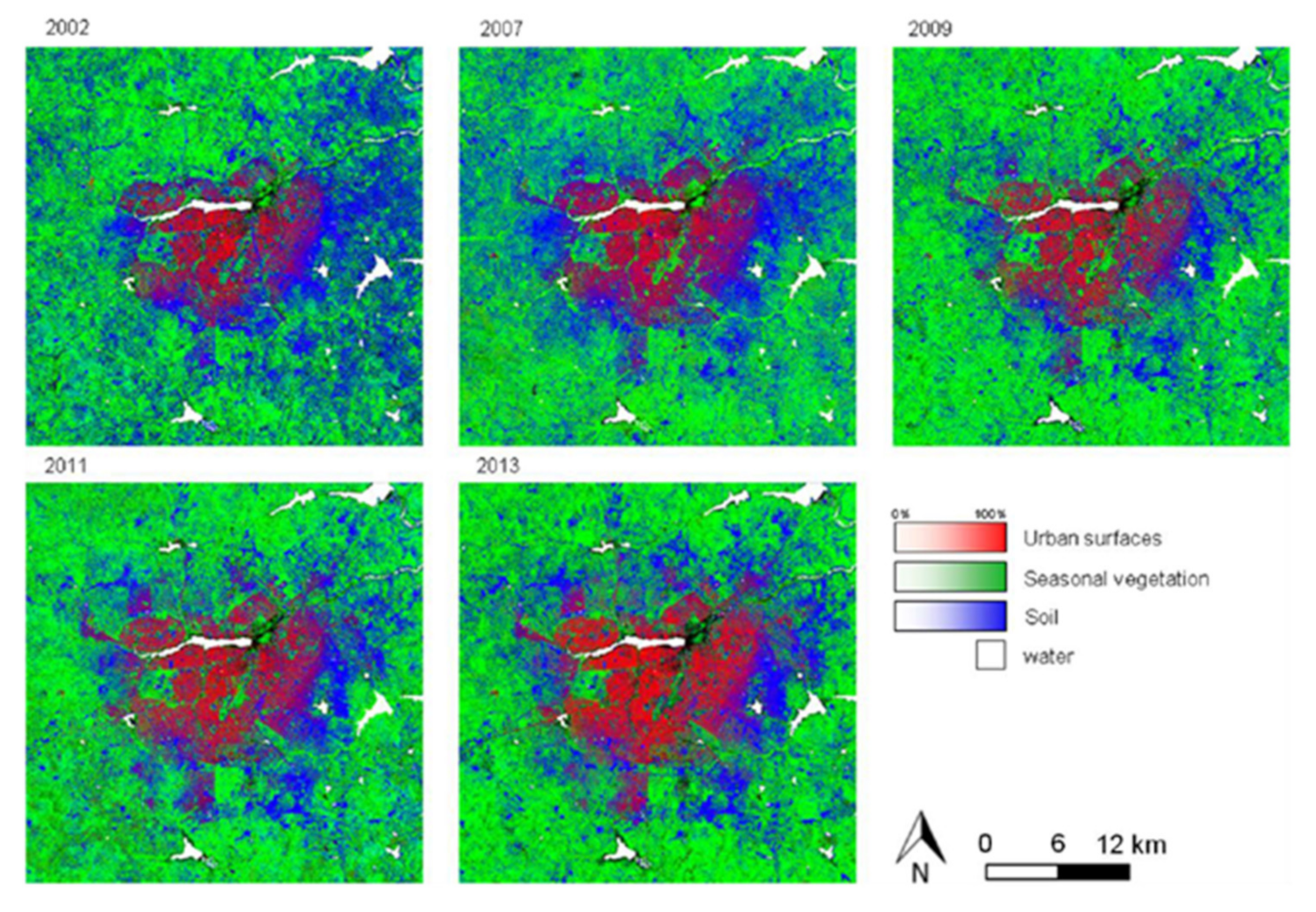
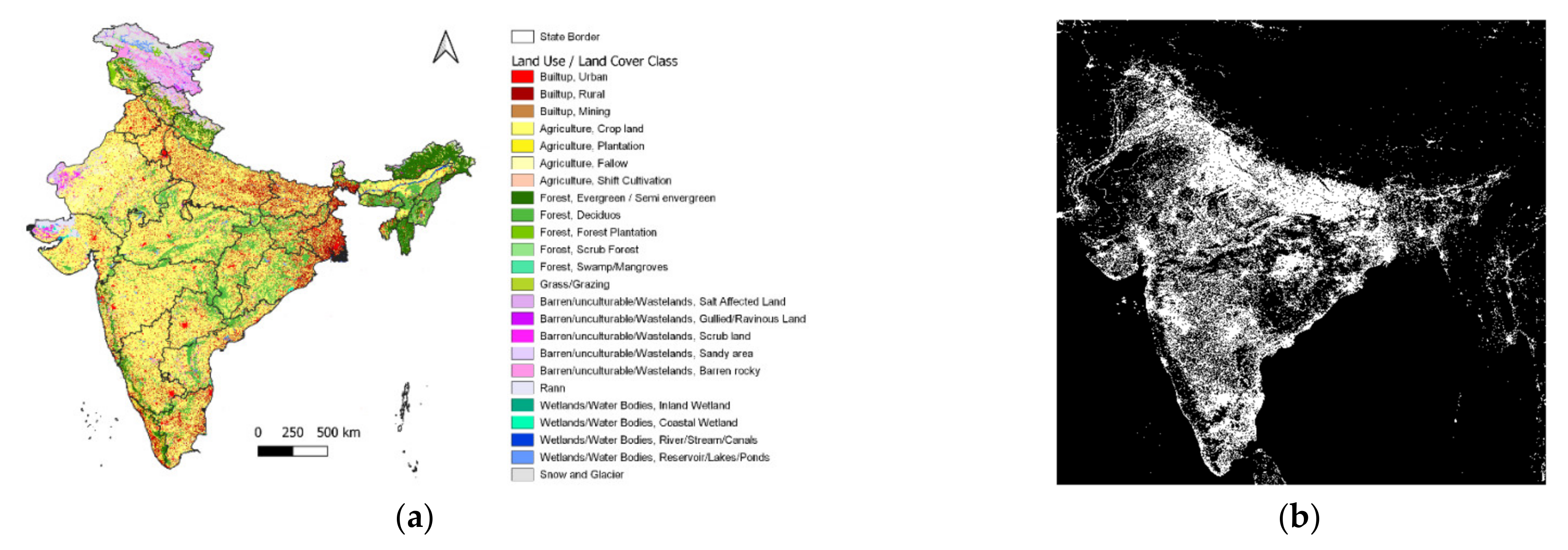
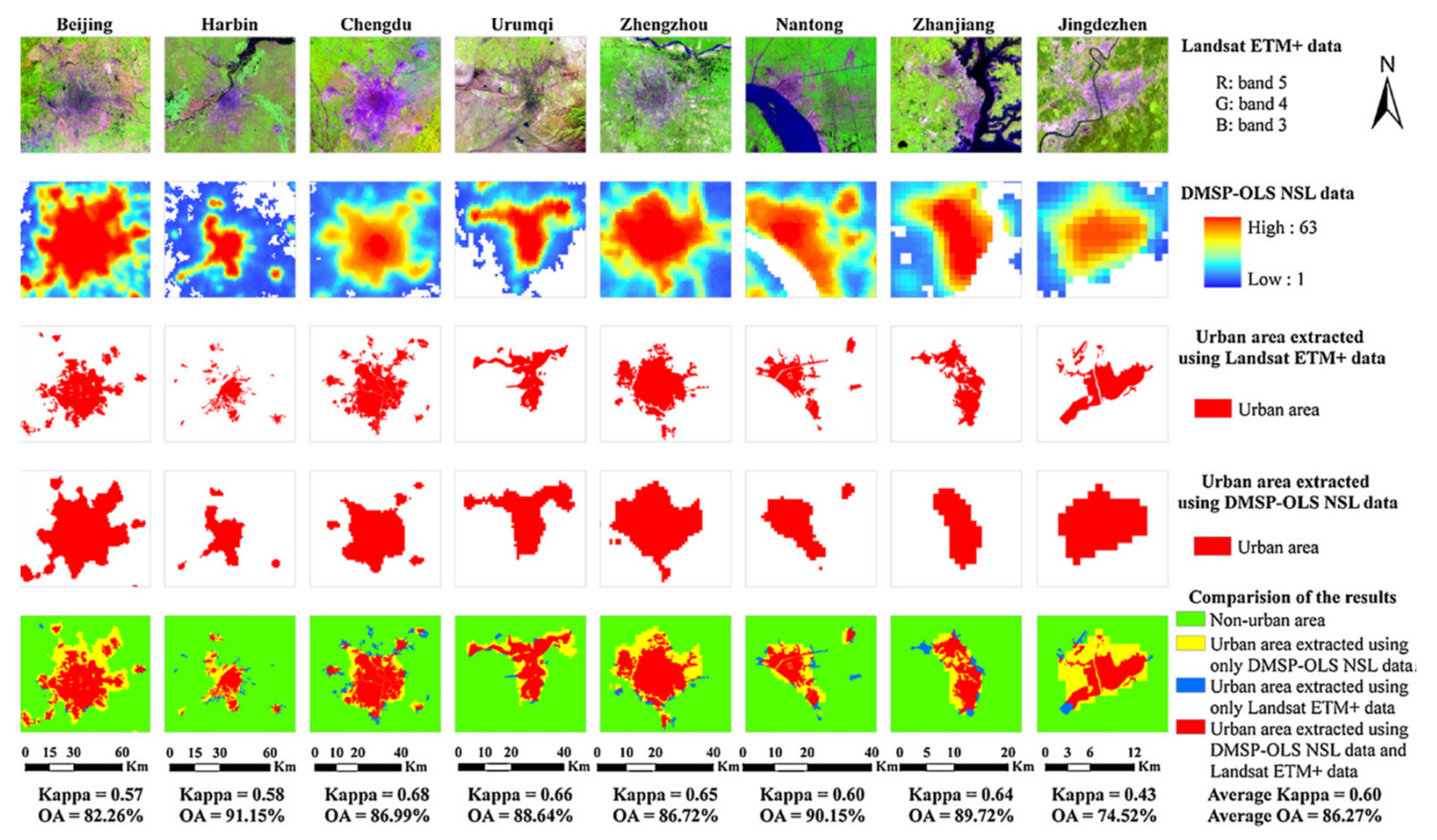

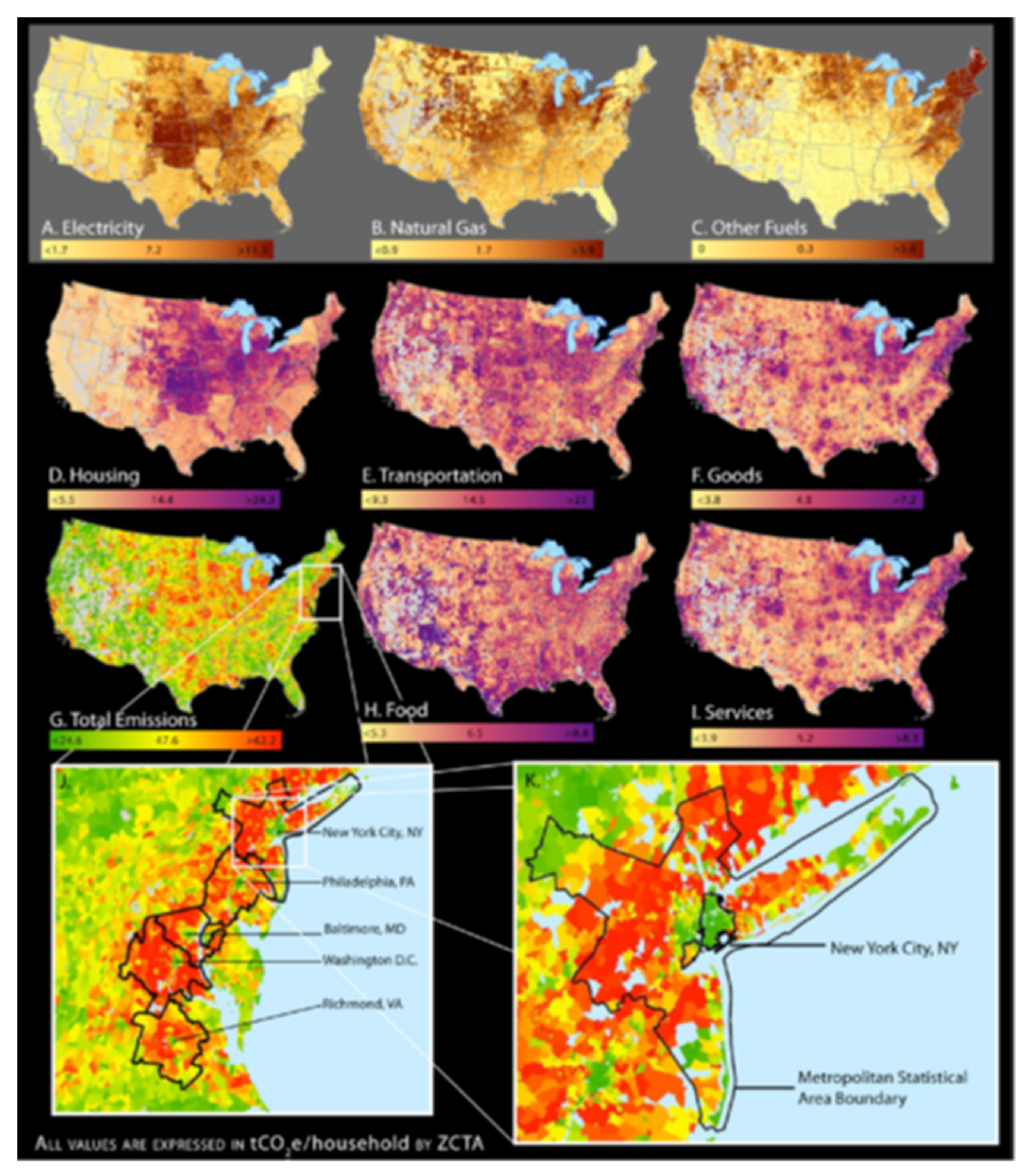
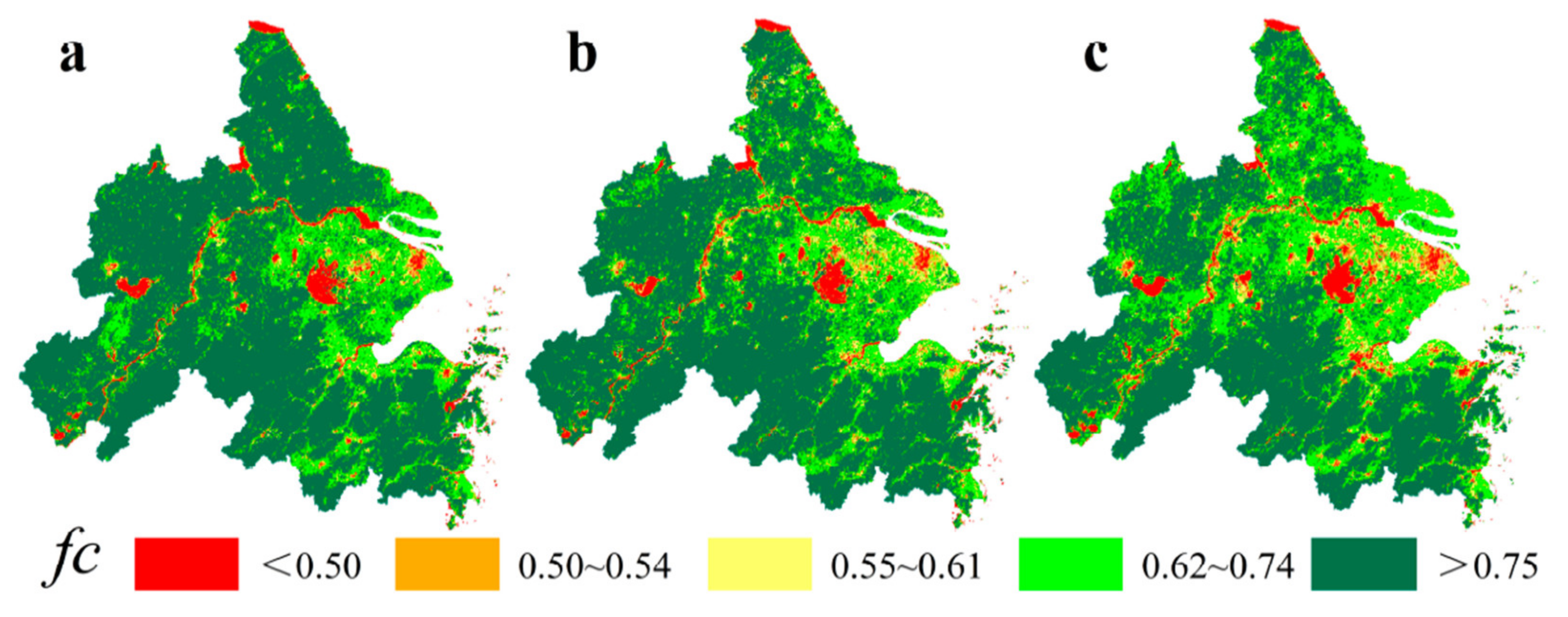

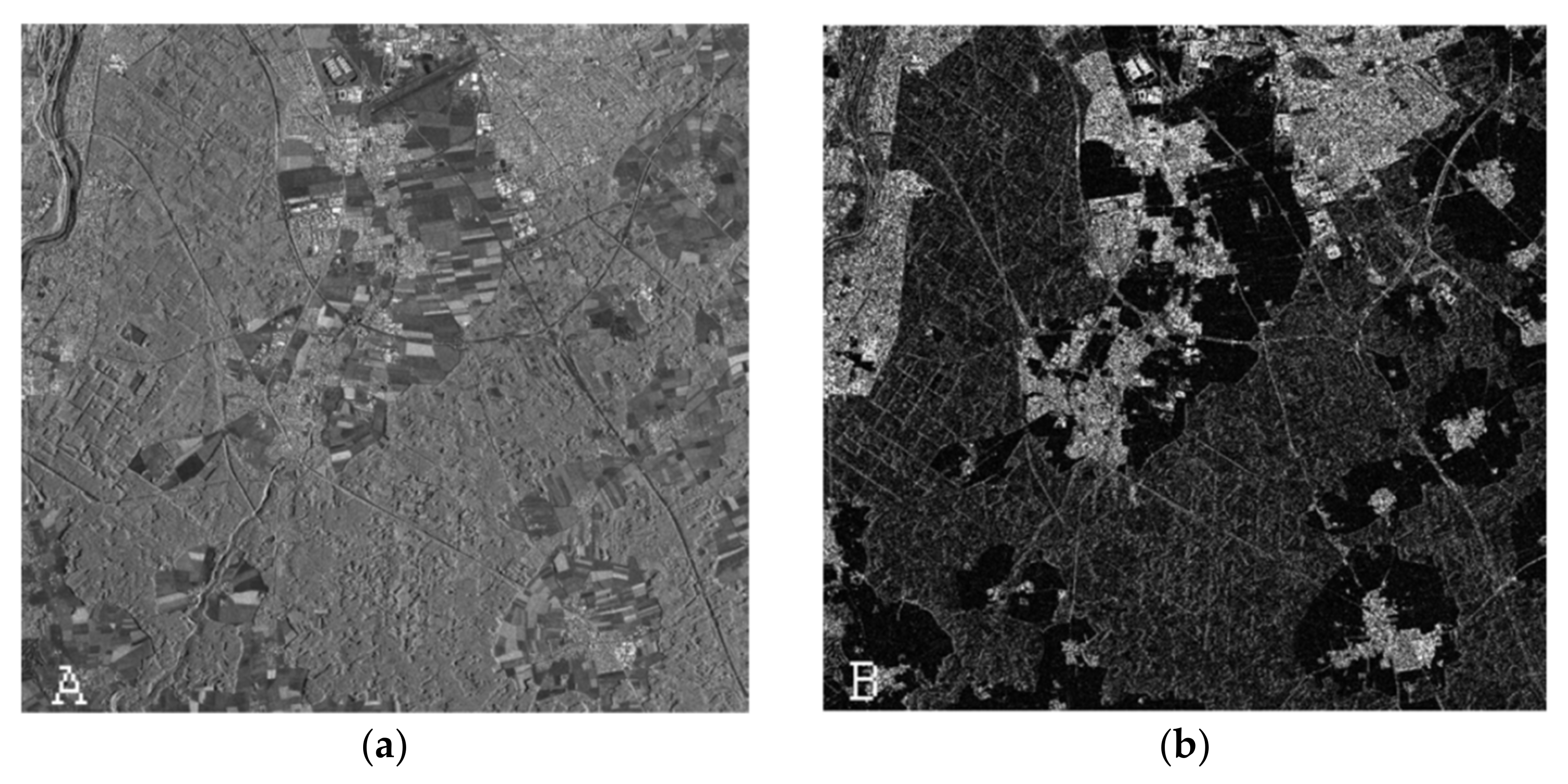
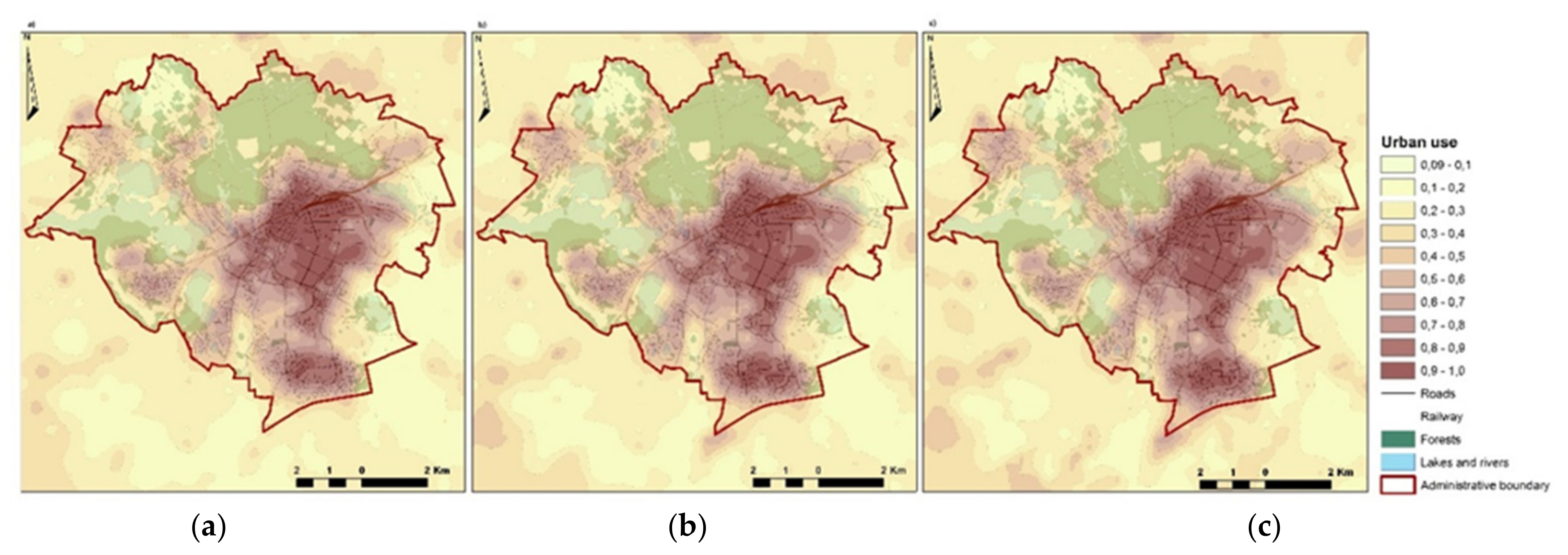
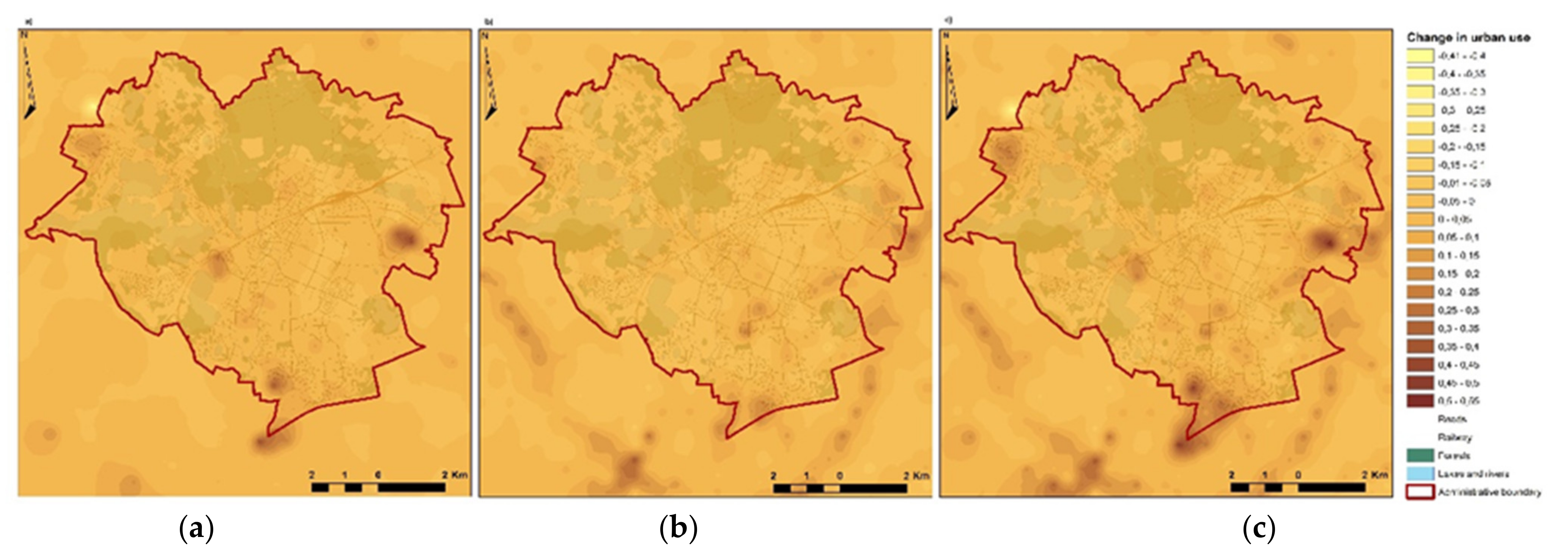
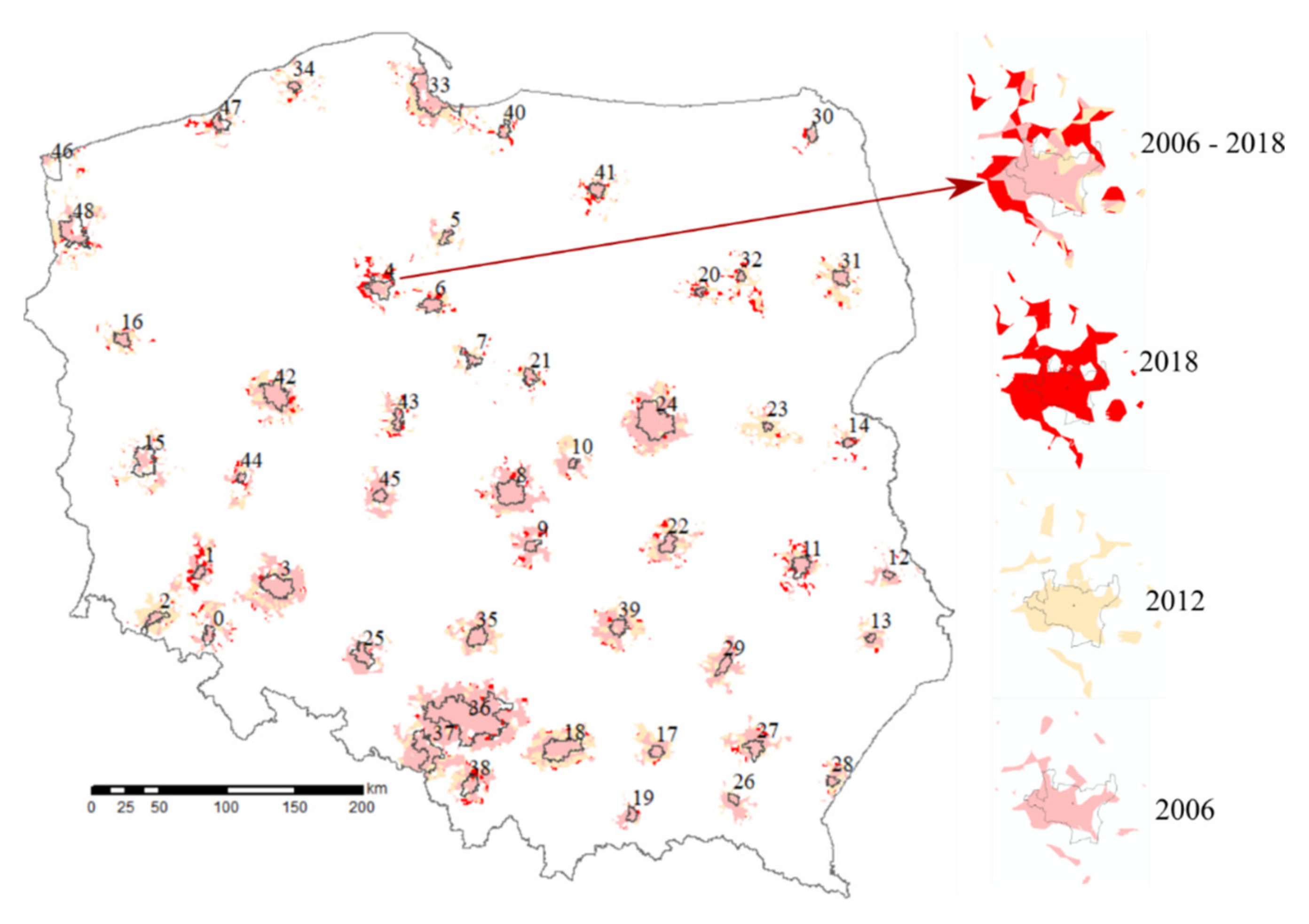
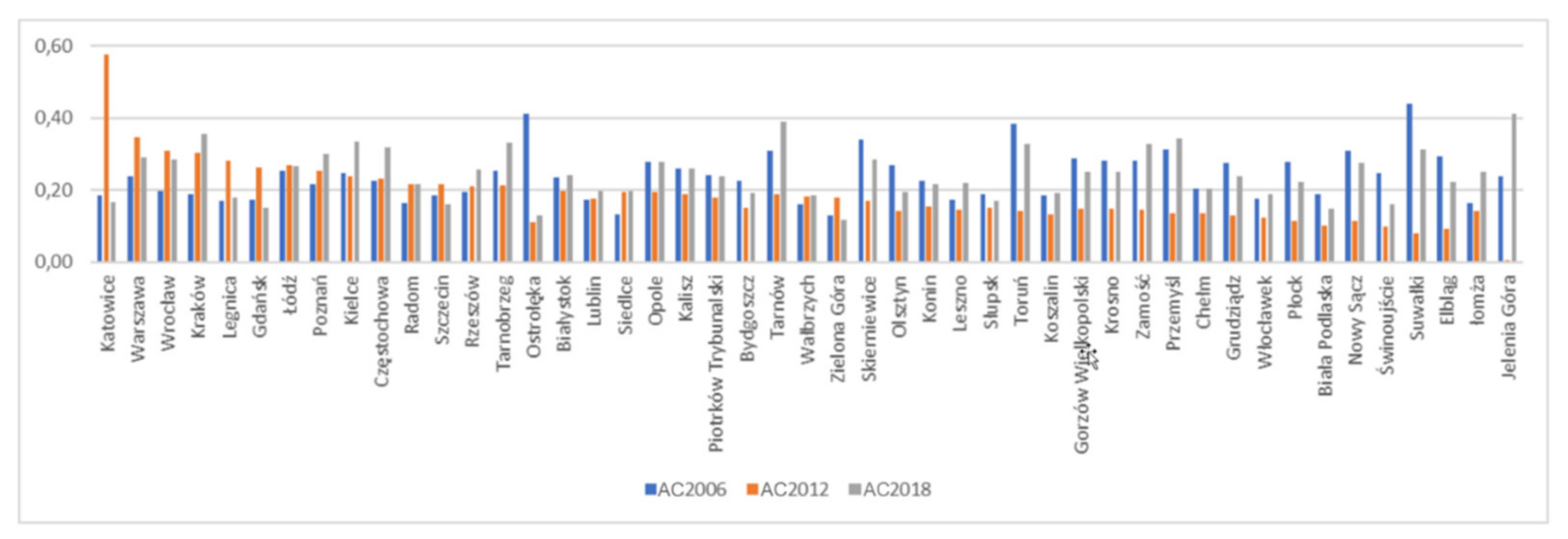
Publisher’s Note: MDPI stays neutral with regard to jurisdictional claims in published maps and institutional affiliations. |
© 2021 by the authors. Licensee MDPI, Basel, Switzerland. This article is an open access article distributed under the terms and conditions of the Creative Commons Attribution (CC BY) license (https://creativecommons.org/licenses/by/4.0/).
Share and Cite
Biłozor, A.; Cieślak, I. Review of Experience in Recent Studies on the Dynamics of Land Urbanisation. Land 2021, 10, 1117. https://doi.org/10.3390/land10111117
Biłozor A, Cieślak I. Review of Experience in Recent Studies on the Dynamics of Land Urbanisation. Land. 2021; 10(11):1117. https://doi.org/10.3390/land10111117
Chicago/Turabian StyleBiłozor, Andrzej, and Iwona Cieślak. 2021. "Review of Experience in Recent Studies on the Dynamics of Land Urbanisation" Land 10, no. 11: 1117. https://doi.org/10.3390/land10111117
APA StyleBiłozor, A., & Cieślak, I. (2021). Review of Experience in Recent Studies on the Dynamics of Land Urbanisation. Land, 10(11), 1117. https://doi.org/10.3390/land10111117






